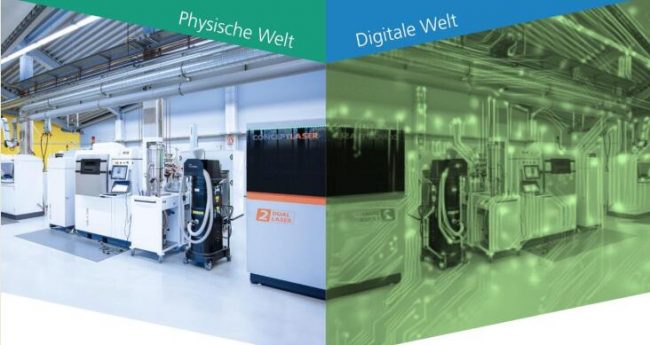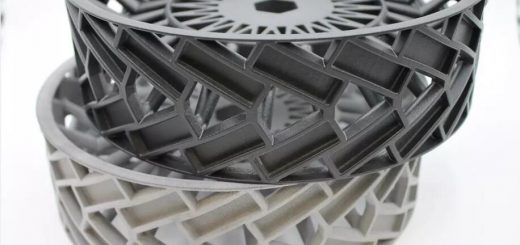Fraunhofer Lighthouse Project Future AM at Formnext: Metal AM on The Verge of a Breakthrough
In the Fraunhofer lighthouse project “futureAM – Next Generation Additive Manufacturing,” an alliance of six Fraunhofer institutes shall accelerate 3D printing with metal powder by at least a factor of ten. The first tangible results prove that this is not a dream of the future. The futureAM team will be presenting these results at the joint Fraunhofer booth D51 in Hall 11 during formnext from November 19 to 22, 2019 in Frankfurt am Main.
 © Fraunhofer IAPT, Hamburg, Germany.
© Fraunhofer IAPT, Hamburg, Germany.
Digitally united: In the futureAM project, the Virtual Lab serves as a digital bracket for all four fields of activity.
Developed in close cooperation with all the participating institutes, the Virtual Lab will digitally link all areas and institutes in the field of metallic additive manufacturing (metal AM) via a network and a database. Thus, it plays an important role in the Fraunhofer lighthouse project. At formnext, the Fraunhofer experts will demonstrate what this lab can do and how it will work. Fritz Lange from the Fraunhofer Research Institution for Additive Manufacturing Technologies IAPT in Hamburg, where the threads of the virtual laboratory converge, explains, “The institutes will use the Virtual Lab to process and track distributed manufacturing.” They also plan to create a closed digital representation of the competencies and equipment of all participating institutes.
![]() Integrated and virtual
Integrated and virtual
The Virtual Lab makes the entire AM process transparent and reflects it digitally: Digital Twins enable project participants to model and simulate processes in order to optimize real systems in all areas of industrial manufacturing. The Virtual Lab is ready for operation and is already being evaluated with so-called dummy data. Currently, the participating institutes are connecting to the Virtual Lab via their database so that the lab can soon start its virtual operation.
Among these institutes is, for example, the Fraunhofer Institute for Material and Beam Technology IWS in Dresden, being responsible for developing the materials in the project. The institute will focus on expanding the range of materials that can be processed by means of additive manufacturing and also on multi-material constructions: Here, laser material deposition (LMD) is used to tailor a component from various materials without needing downstream joining processes. “The process accelerates material development enormously,” says IWS scientist Michael Müller. “In the joint project, we are investigating which materials can be combined with each other and which problems may arise in the process.” The Dresden scientists are currently investigating how, for example, a multi-material component can be produced from various superalloys. When two materials are joined, the analysis of the transition zone between the materials is particularly important. The researchers have now optimized the material transition from the Inconel 718 to Merl 72 alloys in order to minimize challenges such as crack formation or embrittlement.
New scalable metal AM processes and systems are the topic of the Fraunhofer Institute for Laser Technology ILT: The Aachen-based engineers have succeeded in making the step from coating to genuine additive manufacturing in extreme high-speed laser material deposition (EHLA). Together with industrial partners, a 3D EHLA system was developed in which the construction platform is moved extremely quickly in a parallel kinematic manner by three linear drives with a stationary laser processing head.
Fraunhofer ILT has developed a new, compact optical system for laser powder bed fusion (LPBF). It is being used in the first prototype, which – thanks to its build volume (1000 mm x 800 mm x 500 mm) – can also additively manufacture large metal components up to ten times faster than conventional LPBF systems. Another highlight is a software model for controlling the energy input when the powder material is remelted. Christian Tenbrock, research associate at Fraunhofer ILT and futureAM project coordinator explains, “The process parameters can be set individually for each individual melt track in order to increase both component quality and build speed.”
![]() Automated post-processing reduces process costs
Automated post-processing reduces process costs
The cost of mostly manual post-processing is particularly high for metal AM: It accounts for up to 70 percent of the total process costs. Dr. Ines Dani from the Fraunhofer Institute for Machine Tools and Forming Technology IWU in Chemnitz says, “Downstream processing steps have not yet been automated, partly because of the different geometries of the parts to be manufactured. This will now change.” Fraunhofer IWU is developing various autonomous technology modules for the individual processes. A robot takes over both the workpiece handling and the post-process machining.
The ambitious goals of the Fraunhofer partners have so far led to a number of innovations, some of which will be presented at formnext 2019. Among other things, a bionic lever will be exhibited as an example of a large component additively manufactured with a specially designed LPBF machine. A multi-material turbine blade and a rocket nozzle with swirl injectors are further innovations from industries which will soon be conquered by AM. Also on display will be a software demo of the Virtual Lab and the model of a system for automating the previously manual and, therefore, time-consuming post-processing.
Interested visitors can find out more about the current state of metal AM technology at formnext from November 19 to 22, 2019 at the joint Fraunhofer stand D51 in Hall 11.
Fraunhofer lighthouse project “futureAM – Next Generation Additive Manufacturing”
In November 2017, the Fraunhofer lighthouse project futureAM was launched to accelerate the additive manufacturing of metal components by at least a factor of ten. On the one hand, the activities focus on integrating the digital and physical added value from order entry to the finished metallic 3D-component, and, on the other, on facilitating the leap into a new technology generation of additive manufacturing.
Source: Fraunhofer




Recent Comments